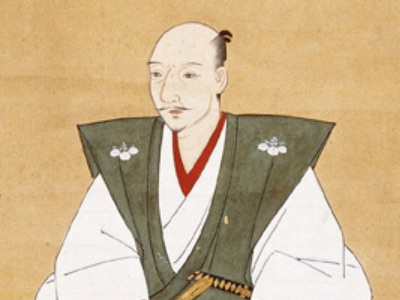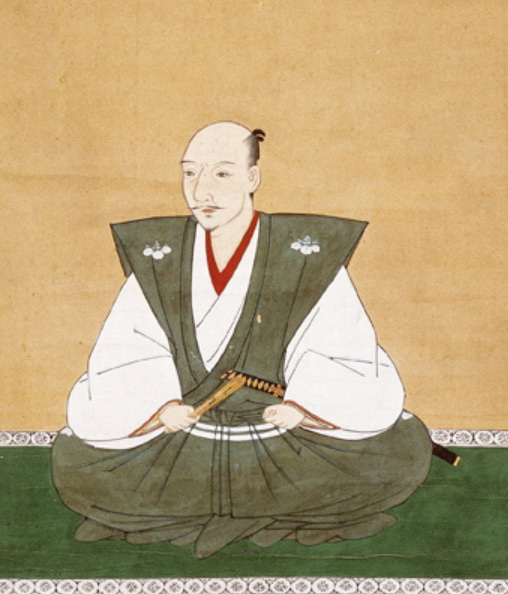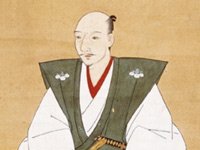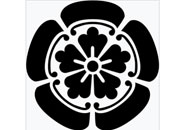Oda Nobunaga (1534-1582)

Oda Nobunaga (織田 信長, June 23, 1534 – June 21, 1582) was a powerful Daimyō of Japan in the late 16th century who attempted to unify Japan during the late Sengoku period. Nobunaga is regarded as one of three unifiers of Japan Japan is an island country in East Asia. Beginning in the 12th century, political power was held by a series of military dictators (shōgun) and feudal lords (daimyō) and enforced by a class of warrior nobility (samurai). In the Meiji period, the empire adopted a Western-modeled constitution and pursued a program of industrialization and modernization. A global leader in the automotive, robotics and electronics industries, Japan has made significant contributions to science and technology. along with his retainers Toyotomi Hideyoshi and Tokugawa Ieyasu. During his later life, Nobunaga was widely known for most brutal suppression of determined opponents, eliminating those who by principle refused to cooperate or yield to his demands. He was both a skilled ruler and keen businessman, economic reformer, strategizing at both the micro- and macroeconomic scales. He was killed when his retainer Akechi Mitsuhide rebelled against him at Honnō-ji.
Japan is an island country in East Asia. Beginning in the 12th century, political power was held by a series of military dictators (shōgun) and feudal lords (daimyō) and enforced by a class of warrior nobility (samurai). In the Meiji period, the empire adopted a Western-modeled constitution and pursued a program of industrialization and modernization. A global leader in the automotive, robotics and electronics industries, Japan has made significant contributions to science and technology. along with his retainers Toyotomi Hideyoshi and Tokugawa Ieyasu. During his later life, Nobunaga was widely known for most brutal suppression of determined opponents, eliminating those who by principle refused to cooperate or yield to his demands. He was both a skilled ruler and keen businessman, economic reformer, strategizing at both the micro- and macroeconomic scales. He was killed when his retainer Akechi Mitsuhide rebelled against him at Honnō-ji.

Historical Context
The goal of national unification and a return to the comparative political stability of the earlier Muromachi period was widely shared by the multitude of autonomous daimyōs during the Sengoku period. Oda Nobunaga was the first for whom this goal seemed attainable. Nobunaga had gained control over most of Honshu before his death during the 1582 Honnō-ji incident, a coup attempt executed by Nobunaga's vassal, Akechi Mitsuhide. It is not certain whether Nobunaga was killed in the attack or committed seppuku. The motivations behind Mitsuhide's betrayal was never revealed to anyone who survived the incident, and has been a subject of debate and conjecture ever since the incident.
Following the incident, Akechi Mitsuhide declared himself master over Nobunaga's domains, but was quickly defeated by Toyotomi Hideyoshi, who regained control of and greatly expanded the Oda holdings. Oda Nobunaga's successful subjugation of much of Honshu enabled the later successes of his allies Toyotomi Hideyoshi and Tokugawa Ieyasu toward the goal of national unification by subjugating local daimyōs under a hereditary shogunate, which was ultimately accomplished in 1603 when Tokugawa Ieyasu was granted the title of shogun by Emperor Go-Yōzei following the successful Sekigahara Campaign of 1600. The nature of the succession of power through the three daimyōs is reflected in a well-known Japanese idiom:
"Nobunaga pounds the national rice cake, Hideyoshi kneads it, and in the end Ieyasu sits down and eats it."
HISTORY

RESOURCES
This article uses material from the Wikipedia article "Oda Nobunaga (1534-1582)", which is released under the Creative Commons Attribution-Share-Alike License 3.0.
© Stories Preschool. All Rights Reserved.









